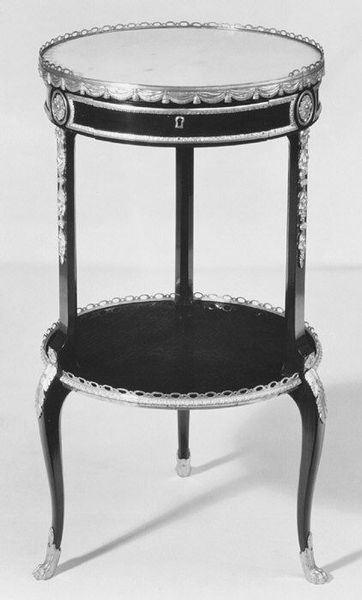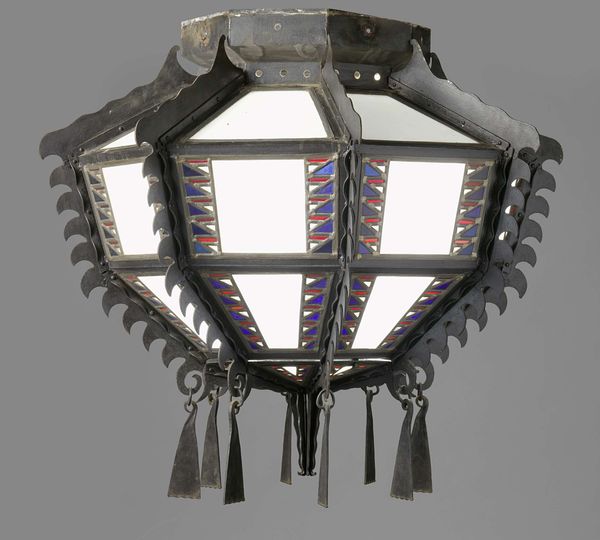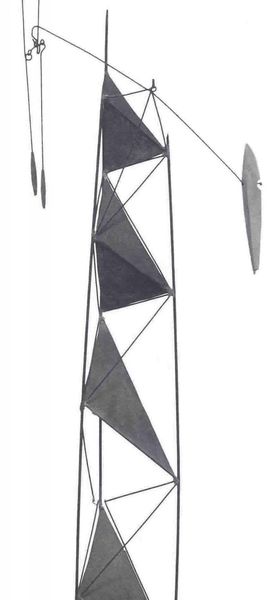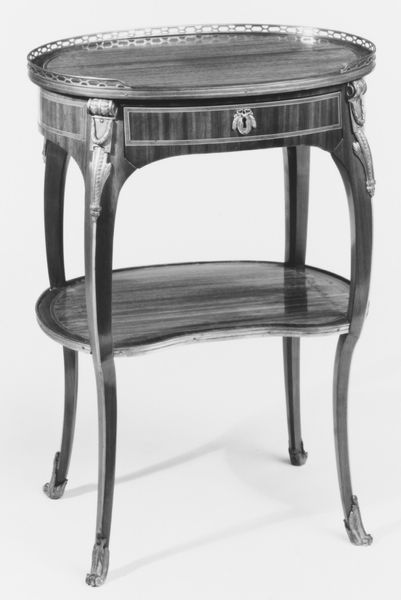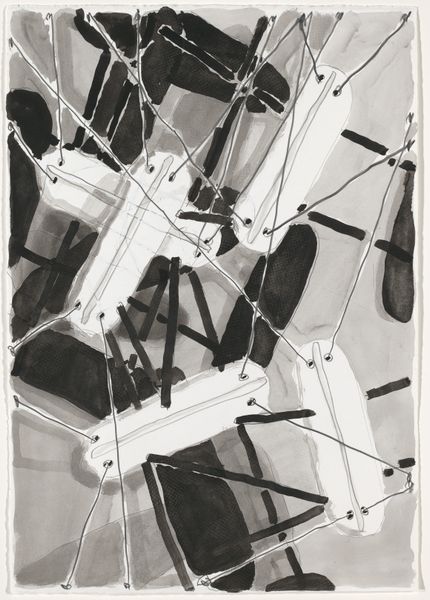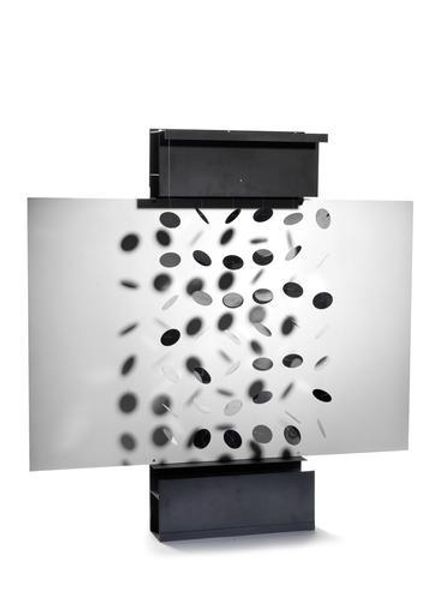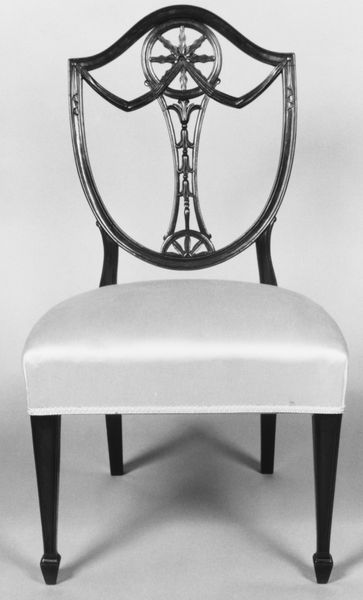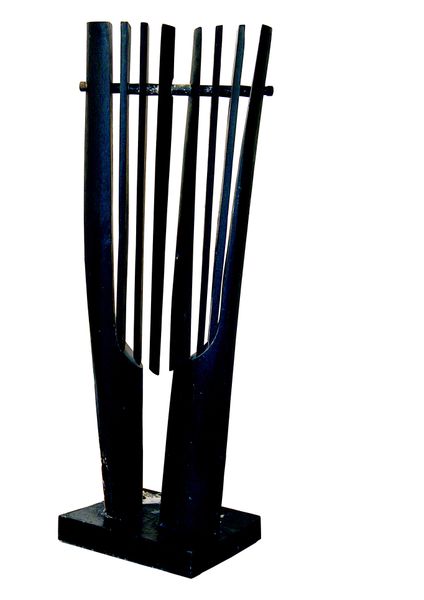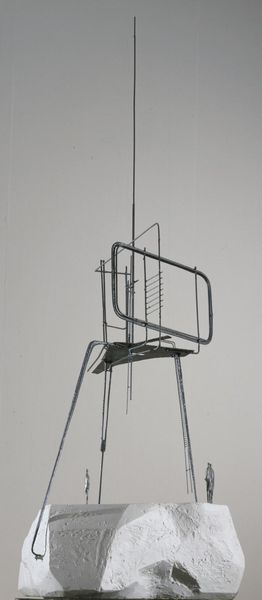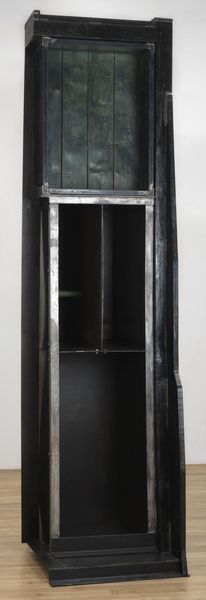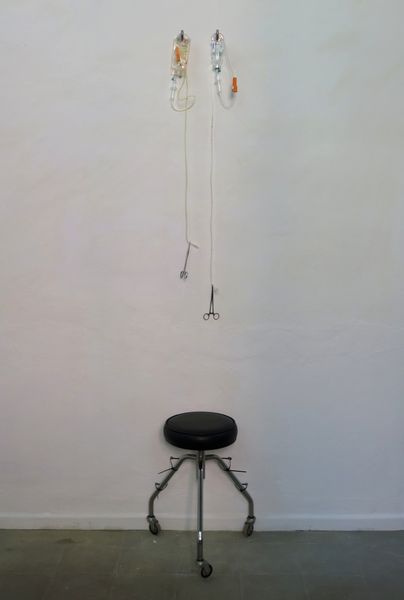
mixed-media, assemblage, found-object, sculpture
#
mixed-media
#
conceptual-art
#
assemblage
#
postmodernism
#
found-object
#
sculpture
#
abstraction
Copyright: Romul Nutiu,Fair Use
Editor: This piece is called "Uncomfortable Design" by Romul Nutiu, created in 1963 using mixed media. It seems to be an altered chair—the seat is shattered mirror. It feels violent, almost like a critique. How do you interpret this work, especially given the time it was made? Curator: The title itself clues us in, doesn't it? "Uncomfortable Design." But what makes it uncomfortable? Is it merely the physical impossibility of sitting on shattered glass? I think it speaks to something deeper, something social. Think about 1963—a time of immense social upheaval, civil rights struggles, and the burgeoning feminist movement. Editor: So, you're suggesting it's more than just aesthetics? Curator: Exactly. The broken mirror, the altered chair—they disrupt our expectations of domesticity, of comfort, of the roles furniture is meant to play. Whose reflection is shattered here? Perhaps it’s a reflection of societal expectations shattering around that time? Think about the constraints placed upon women, upon marginalized communities. This artwork becomes a powerful metaphor for those fractures. What do you make of the small, colorful rods seemingly holding some cracks together? Editor: Maybe they are stand-ins for failed repairs or flimsy social and political promises? Curator: Precisely! It suggests a band-aid solution to deep structural issues. Consider also the readymade object— a chair and mirror—and what it means to rework an object into new context as an artwork to create meaning. Nutiu is repurposing items from the every day in a political fashion. This brings into play questions of artistic skill vs. concept, critiquing our standards. Editor: I never considered how loaded something as simple as a chair could be! I now think I appreciate art as part of a cultural environment more profoundly. Curator: That’s precisely the point! It’s not just about what you see, but *how* you see, within the tapestry of history and social movements. Now I can’t wait to consider other readymade or assembled items, and what statements they were intended to communicate, too!
Comments
No comments
Be the first to comment and join the conversation on the ultimate creative platform.
